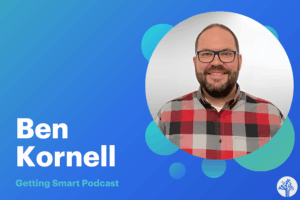The Edu-Innovation Opportunity
A reporter asked me “what went wrong with the small schools idea?” It’s odd question because all the networks developing highly effective new schools—KIPP, Achievement First, Success Network, Green Dot, Alliance and dozens more—still use the tried and true rule of thumb of 100 students per grade.
The better question is “what went wrong with the big schools idea?” The 50-year experiment with mega-high schools of 1,500-4,500 students had disastrous results especially for low income students. The combination of anonymity and a proliferation of low expectation courses set up the results we see today: one third of American students drop out and one third graduate unprepared for college or careers.
Fixing this problem has proven vexing. The one difference between good schools and bad schools is everything—structure, schedule, curriculum, instruction, culture, and connections with families and community. That makes turnarounds, especially at the high school level, really difficult. Layer on top of that outdated employment contracts and revolving door leadership and you have a national Gordian knot.
The best approach to date has been trading bad seats for good seats—closing failing schools and opening good new schools. This approach, while politically and logistically difficult, has been used with success in Chicago and New York. Armed with this knowledge, Arne Duncan went to Washington determined to take on the problem lowest performing schools.
The good news is that team Duncan inserted more than $5 billion into the stimulus plan to address this problem. The bad news is that grant programs address specific schools and encourage do-it-yourself fixes rather than new school development.
Layered on top of efforts to fix failing schools is the push for a new edu-employment bargain. Obama and Duncan deserve a lot of credit for pushing for a new bargain that values performance, differentiates compensation, and encourages talented and motivated young people to consider teaching.
There’s a emerging opportunity set that we need to interject into the national focus on bad schools and bad teachers—personalized digital learning.
Most ‘teacher effectiveness’ efforts presume a classroom of age-cohorts slogging through textbooks and taking bubble sheet tests. The most talented teachers have a hard time meeting the needs of diverse students. If we shift the focus from teaching to learning, we’d invest more in a new generation of learning tools, platforms, and school formats that personalized learning.
New tools will help us rethink school turnarounds as well. The old rule of thumb of 100 kids per grade is simply a function of how many kids a group of adults can get to know. When learning looks more like an iPod playlist and kids are connected to a variety of adults on social learning platforms, we can begin to imagine schools that blend the best of online and onsite learning. It is becoming possible to make big schools personal and effective by incorporating digital learning.
We can’t reach the goals that President Obama set to be first in the world in college completion by reforming the system we have; this is an innovation challenge. It will take new tools, new schools, new partnerships, and a variety of new roles for learning professionals.
Here’s an example of five policies that would speed innovation and improvement:
- Students should be able to enroll anywhere
- Funding should follow students to the best learning option
- States should expand, not restrict, innovative learning options
- The feds, states, and districts should embrace rather than exclude private investment in learning solutions
- Universities should accept demonstrated competence in addition to transcripts based on seat time and credits
We are attacking the Gordian knot with 2005 solutions when we should be building 2015 solutions to America’s education challenge.







0 Comments
Leave a Comment
Your email address will not be published. All fields are required.